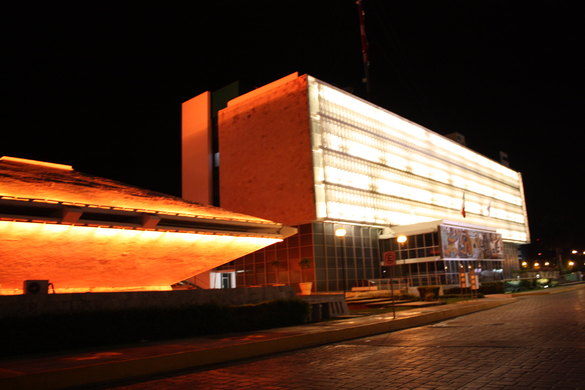In the middle of this historic colonial city resides a modernist government building known as the UFO.
INSPIRED BY OSCAR NIEMEYER’S ICONIC late 1950s architectural works found across Brasília, architect Joaquín Álvarez Ordóñez began construction of this public building in 1963. A year prior, the governor of Campeche, José Ortiz Ávila, destroyed many of the government buildings and replaced them with modern structures.

Álvarez was assigned to lead the project which oversaw the construction of the Edificio de los Tres Poderes, a complex designed to house the state’s executive, legislative and judicial powers. The executive and legislative buildings are connected, with the executive building being rectangular and marked by a raised mural panel.

The Legislative Palace really standouts amid the others. Its shape resembles two truncated pyramids connected at their base. It’s often referred to as El Ovni or El Platillo Volador (UFO or Flying Saucer). At night, the Flying Saucer is cascaded with different colored lights, adding to its otherworldly aura.
With Campeche having been declared a UNESCO World Heritage Site in 1999, the modernist works of Álvarez were under threat as the city’s heritage tourism focus shifted to colonial features. In addition to governor Ortiz’s construction boom, his predecessor Alberto Trueba Urbina is partly responsible for the Legislative Palace, as many of these buildings were established over territory reclaimed from the Gulf of Mexico during his mandate.

Outside the historic center’s colonial walls, this reclaimed area saw many of its modern buildings fall into disrepair. By 2012, this Modernist legacy was at the center of Campeche’s UNESCO heritage appreciation and buildings like El Ovni (the UFO), underwent renovation works.
While the Legislative Palace’s buildings are not accessible to visitors, they are visible at all times.
Source: Atlas Obscura


